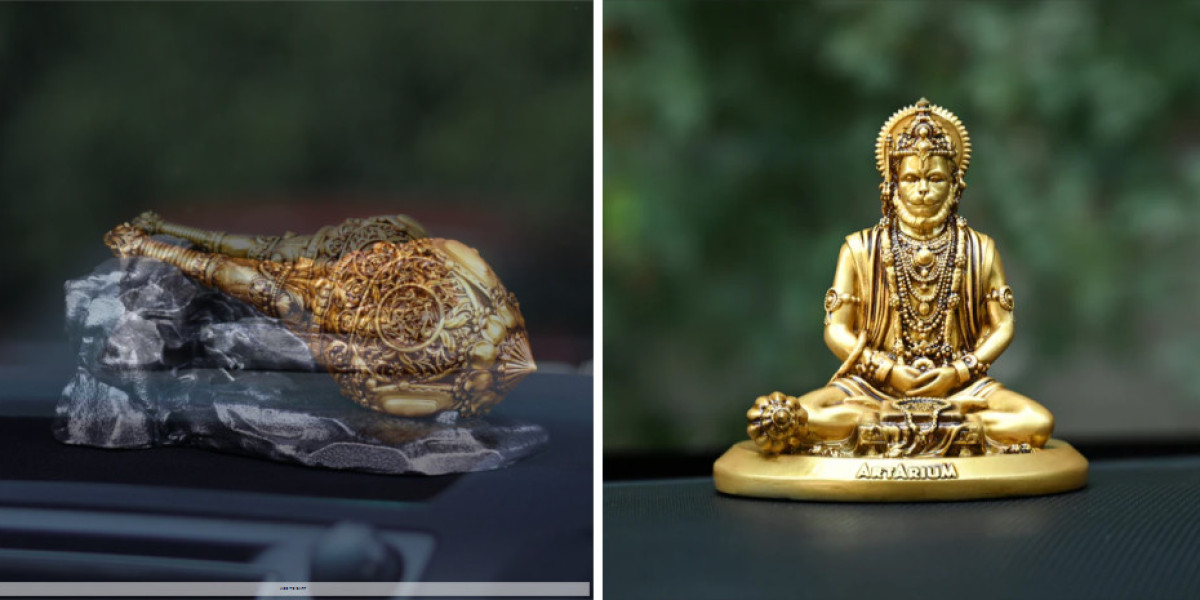The dashboard of a car is a critical element of vehicle operation, serving as the interface between the driver and the vehicle's various systems. Understanding the dashboard's components and functions can greatly enhance your driving experience, help you maintain vehicle health, and ensure safety. This guide provides an in-depth look at the key elements of a car dashboard, their functions, and how to effectively use and interpret them.
The Key Components of a Car Dashboard
Your car’s dashboard is divided into several key areas, each designed to provide important information and control functions:
Instrument Cluster
The instrument cluster is the area directly in front of the driver and contains essential gauges and warning lights:
Speedometer: This gauge measures your current speed and is crucial for adhering to speed limits and maintaining safe driving speeds. Speedometers typically display speed in miles per hour (mph) or kilometers per hour (km/h).
Tachometer: The tachometer shows the engine’s revolutions per minute (RPM). Monitoring the tachometer helps prevent engine over-revving, which can cause engine damage over time. It’s especially important in manual transmission vehicles to avoid exceeding the engine’s optimal RPM range.
Fuel Gauge: Indicates the amount of fuel remaining in the tank. Keeping an eye on the fuel gauge helps you avoid running out of fuel and ensures timely refueling.
Oil Pressure Gauge: This gauge measures the pressure of the engine oil. Low oil pressure can indicate issues such as low oil levels or a malfunctioning oil pump, both of which could potentially damage the engine.
Temperature Gauge: Shows the temperature of the engine coolant. An overheating engine can lead to serious damage, so monitoring this gauge helps prevent overheating issues by allowing you to take action if the engine temperature rises too high.
Battery Voltage Gauge: Displays the voltage level of the car’s battery. This gauge helps you ensure that the battery is charging correctly and is in good condition, which is vital for starting the car and powering electrical components.
Warning Lights: Various warning lights illuminate to alert you to potential issues:
- Check Engine Light: Signals a problem with the engine or related systems. It could be due to minor issues, such as a loose gas cap, or more serious problems requiring professional attention.
- Brake Warning Light: Indicates issues with the braking system, such as low brake fluid or worn brake pads. This light requires immediate attention to ensure safe braking performance.
- Oil Pressure Light: Alerts you to low oil pressure, potentially caused by low oil levels or a failing oil pump. Addressing this issue promptly is crucial to avoid engine damage.
- Coolant Temperature Light: Warns of an overheating engine. If this light comes on, it’s essential to pull over and allow the engine to cool down before proceeding.
Control Panel
The control panel contains various buttons, switches, and knobs that allow you to operate different vehicle systems:
Climate Control: Manages the temperature and airflow inside the car. This system includes controls for adjusting the fan speed, temperature settings, and air direction to maintain a comfortable cabin environment.
Headlight Controls: Operate the vehicle’s headlights and taillights. This includes controls for high and low beams, fog lights, and automatic light settings. Proper use of headlights is crucial for visibility and safety in low-light conditions.
Turn Signal Levers: Located on either side of the steering column, these levers activate your turn signals and sometimes control the windshield wipers. They are vital for signaling lane changes and turns to other drivers.
Cruise Control: Allows you to set and maintain a constant speed without keeping your foot on the accelerator. This feature is particularly useful on long highway drives, helping to reduce driver fatigue.
Windshield Wiper Controls: Adjust the speed and frequency of the windshield wipers. Many vehicles also have controls for windshield washer fluid, which helps maintain visibility during adverse weather conditions.
Center Console
The center console is located between the driver and passenger seats and includes additional controls and storage options:
Gear Shifter: Allows you to select different gears in the transmission. It includes options for park, reverse, neutral, and drive in automatic transmissions, and gear selection in manual transmissions.
Storage Compartments: Provides space for storing personal items such as phones, maps, and small accessories. Many center consoles also feature cup holders and an armrest with additional storage underneath.
Charging Ports: USB ports or power outlets for charging electronic devices. These ports are essential for keeping devices powered during long trips, adding convenience to the driving experience.
Infotainment System
Modern vehicles come equipped with advanced infotainment systems that integrate various functions into a central touchscreen interface:
Navigation System: Provides turn-by-turn directions, real-time traffic updates, and points of interest. This system helps you navigate efficiently and avoid traffic congestion.
Media Player: Allows you to listen to music from various sources, including radio, CDs, USB drives, and streaming services. Many systems also support Bluetooth for wireless audio streaming.
Hands-Free Communication: Enables you to make and receive phone calls without taking your hands off the wheel. This feature integrates with voice recognition and controls to enhance safety and convenience.
Vehicle Settings: Lets you customize various settings related to vehicle functions, such as lighting, door locks, and driver assistance features. Tailoring these settings to your preferences can enhance your overall driving experience.
Understanding Dashboard Warning Lights
Dashboard warning lights provide important information about the vehicle’s condition and require your attention:
Check Engine Light: This light can indicate a range of issues, from minor problems to significant engine malfunctions. If it illuminates, it’s essential to have your vehicle inspected by a professional.
Brake Warning Light: Signals a problem with the brake system, such as low brake fluid or worn brake pads. This light should be addressed immediately to ensure safe braking performance.
Oil Pressure Light: Alerts you to low oil pressure, potentially due to low oil levels or a failing oil pump. Promptly addressing this issue is crucial to prevent engine damage.
Battery Light: Indicates an issue with the car’s charging system, which could involve the battery or alternator. Regular checks of the battery and charging system can prevent unexpected breakdowns.
Coolant Temperature Light: Warns of an overheating engine. If this light comes on, pull over safely and allow the engine to cool before checking coolant levels.
Innovations in Dashboard Technology
Recent advancements have introduced innovative features to dashboards, enhancing safety and convenience:
Heads-Up Displays (HUDs): Project important information, such as speed and navigation directions, onto the windshield. This technology allows you to keep your eyes on the road while accessing critical data.
Adaptive Cruise Control: Maintains a set speed and adjusts it based on the speed of vehicles ahead. This feature helps reduce driver fatigue and improves safety on long drives.
Lane Departure Warning: Alerts you if you unintentionally drift out of your lane. This feature helps to prevent accidents caused by lane drifting.
Blind Spot Monitoring: Uses sensors to detect vehicles in your blind spots and provides visual or audible warnings. This improves safety during lane changes and merging.
Maintaining Your Dashboard
Proper maintenance of your dashboard is essential to ensure its longevity and functionality:
Regular Inspections: Frequently check dashboard lights and gauges to ensure they are functioning correctly.
Clean with Care: Use appropriate cleaners for your dashboard materials (such as plastic or leather) to avoid damage. Avoid harsh chemicals that can deteriorate the dashboard surface.
Software Updates: Keep your infotainment system and navigation software updated to benefit from the latest features and improvements.
Conclusion
Your car’s dashboard is a vital component that provides essential information and control over your vehicle. By understanding the instrument cluster, control panel, center console, and infotainment system, you can manage your vehicle’s performance effectively and address any issues promptly. Regular maintenance and a clear understanding of dashboard features contribute to a safer and more enjoyable driving experience.



